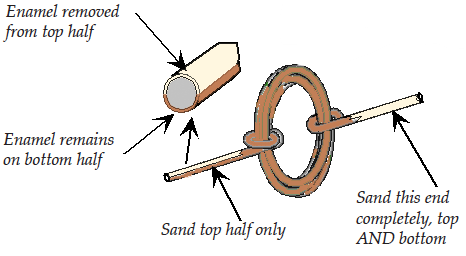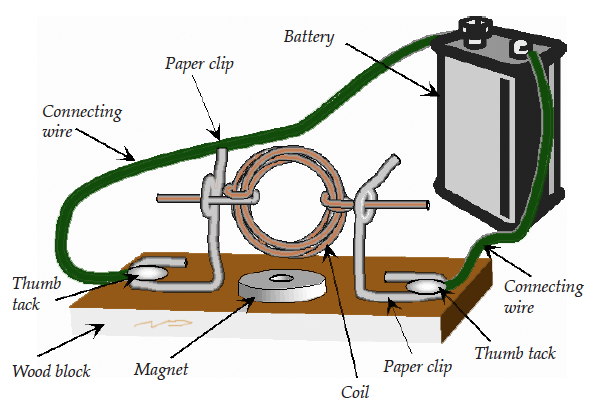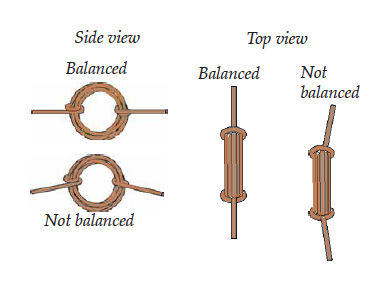EU2.2. Using Electricity to Do Work

{ Energy Use Contents } { All GSS Books }
In the Lab Investigation “Doing Work to Create Electricity,” you were generating electricity by moving a coil of wire near a magnet or moving the magnet near the coil. The generator transforms kinetic energy (energy of motion) into electrical energy. Do you think you can make it work in reverse: force a coil to move by putting electricity into it? That’s what an electric motor is! It transforms electrical energy into kinetic energy. See if you can make an electric motor with the same parts you used before, with the addition of a battery, some paper clips, and thumb tacks.
Materials
- 2 thumb tacks soft wood block (3″ square x 1/2″ deep)
- 2 paper clips wood dowel (3/4″ x 2″ long)
- magnet magnet wire (about 50 cm)
- 6-volt battery
- 2 connecting wires
Strategies for Investigation

1. Wrap the magnet wire around a dowel about 15 turns leaving about 5 cm of wire on either end. Wrap each end around the coil two or three turns to hold it together.

2. The copper wire has an enamel coating, and must be sanded to allow for an electrical connection. Sand one arm completely around on all the sides. Sand the other arm only on the top.

3. Bend each paper clip into a 90° angle. Notice that there is a longer side and a shorter side.
4. Bend the open arm of the larger side up to make a loop.
5. On the wood block, place the thumb tacks and paper clips as show in the “Electric Motor” drawing on the next page.

6. Place the arms of the coil through the little loops of the paper clips. Adjust the coil’s arms so that the coil is centered and balanced, as shown on the bottom half of this page. Keep spinning the coil after each little adjustment until it spins freely.
7. When the coil is balanced, place the magnet underneath it between the paper clips. Attach a connecting wire to each battery terminal and then to each paper clip at the thumb tacks. Give the coil a spin, and watch it go!
If the motor does not work, here are a few things to check:

- Make sure the coil’s arms are sanded where they touch the paper clips.
- Make sure the coil is properly balanced.
- Is the battery good?
- Check all connections.
Explanation
The motor is like a generator in reverse. Putting a current of electricity through the coil of wire makes it magnetic and it’s magnetic field pushes against the magnet under the coil, making the coil flip over. The arm of the coil sanded on one side only is called the commutator. The insulated side turns off the magnetism in the coil for half the turn, allowing the coil’s momentum to flip it around until the poles can repel each other again. The process continues, and the coil will keep flipping as long as the battery is connected.
Some Experiments To Try
Does the motor run faster if two magnets are placed on top of each other underneath the coil? How about with one magnet above the coil and one below?

